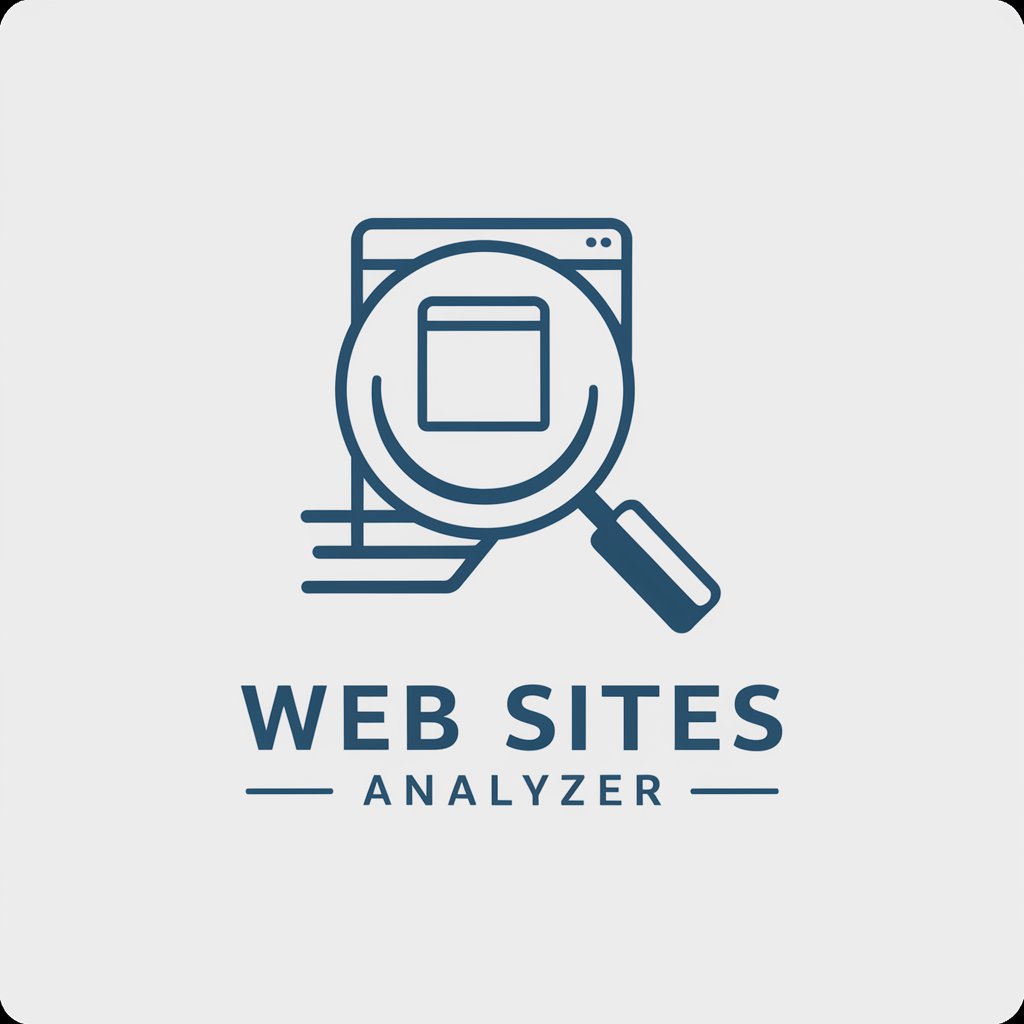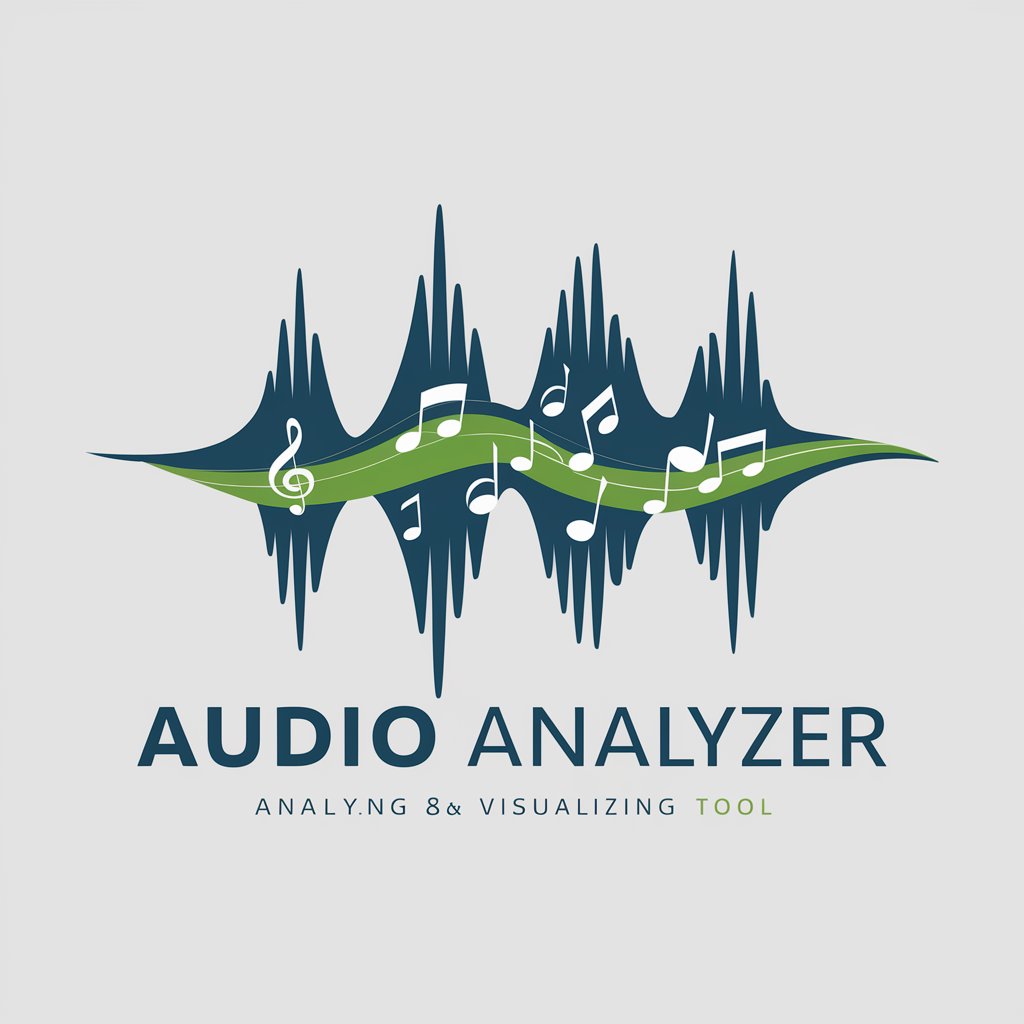
Web sites analyzer-website analysis tool for SEO and performance insights.
AI-powered website analysis for optimal performance.

Analyzes web sites
Get Embed Code
Web sites analyzer — Overview and Design Purpose
Web sites analyzer is an intelligent assistant designed to inspect, interpret, and summarize web pages and website collections quickly and accurately. Its core purpose is to bridge the gap between raw web content and actionable information by extracting structure (HTML, headings, links), content (text, images, key facts), signals (metadata, page load, SEO elements), and context (source credibility, date, relation to other pages). It is built to serve users who need fast insights from one or many web pages without manual reading or heavy tooling. Example: a product manager gives the assistant three competitor product pages; Web sites analyzer returns a concise comparison of features, pricing cues, unique positioning statements, and gaps to exploit. Another example: a researcher supplies a PDF or article URL on a new study; the assistant extracts the hypothesis, methods, sample size, main results, limitations, and provides clear one-paragraph and bullet summaries for easy consumption.
Primary functions and how they are used
Content extraction and summarization
Example
A marketing analyst providesWeb sites analyzer overview ten blog URLs about a topic (e.g., "zero-party data best practices"). Web sites analyzer extracts the headline, subheadings, key paragraphs, lists, and conclusion from each page and then produces a consolidated executive summary highlighting recurring themes, novel claims, and quotes.
Scenario
Before a product launch the marketing team needs a 2-page brief summarizing how competitors frame privacy features. The assistant ingests competitor pages, extracts the positioning statements and USPs, notes direct quotes for inclusion, and generates a comparative brief that the marketing lead uses to craft messaging.
Technical and SEO signal analysis
Example
An SEO specialist gives a page URL. The assistant reads meta title/description tags, H1/H2 structure, internal links, canonical tags, image alt text, structured data (JSON-LD), and page speed indicators (where available), then reports strengths and quick fixes (e.g., missing meta description, duplicated H1, or absent schema markup).
Scenario
A small e-commerce site is losing organic traffic. The SEO consultant provides representative product pages. Web sites analyzer identifies common technical issues across product pages (missing alt attributes, slow large images, inconsistent structured data), ranks them by expected impact, and outputs an actionable prioritized checklist for the development team.
Source evaluation and context linking
Example
A journalist curating a fact-check supplies several pages and a claim. The assistant extracts the claim, finds supporting or contradicting statements on the provided pages, annotates publication dates, authorship, and citations within the pages, and assesses credibility (e.g., primary source, press release, opinion piece).
Scenario
During fast-moving news, an editor must determine whether an emerging claim is supported. The assistant ingests candidate pages, highlights where the claim appears, points to the original source if present (e.g., academic paper, government page), and rates the reliability of each source with short justification so the editor can decide whether to publish or wait for confirmation.
Who benefits most from Web sites analyzer
Product managers, marketing teams, and competitive intelligence units
These users need rapid synthesis of competitor positioning, feature lists, pricing, and messaging across many pages. They benefit because the assistant converts disparate web pages into structured comparisons, prioritized opportunities, and shareable briefs, saving hours of manual review and reducing the chance of missing subtle differentiators.
Researchers, journalists, and analysts
These users require accurate extraction of claims, methods, dates, and citations from web articles and PDFs. The assistant helps by summarizing long documents, surfacing primary sources and supporting evidence, assessing credibility, and producing citation-ready excerpts—useful for fact-checking, reporting, literature reviews, and due diligence.
How to Use a Website Analyzer
Visit the Website Analyzer
Go to aichWeb sites analyzer guideatonline.org to access the website analyzer. You can start using it immediately with a free trial, no login required, and no need for a ChatGPT Plus subscription.
Enter the Website URL
On the homepage, you'll see a prompt to enter the URL of the website you want to analyze. Paste the full URL of the website you wish to evaluate.
Select Analysis Options
Choose the specific analysis tools you want to use. You may select from SEO metrics, page speed analysis, content quality evaluation, mobile optimization checks, and more.
Run the Analysis
Click on the 'Analyze' button to begin the website analysis process. The system will evaluate the chosen aspects of the website and generate a detailed report.
Review and Interpret Results
Once the analysis is complete, review the results in the dashboard. Use the insights to improve your website’s performance, content, and SEO strategies.
Try other advanced and practical GPTs
ISO9001:2015 Expert
AI-powered ISO 9001 expert for faster compliance

Tax & Taxes Specialist
AI-powered tax advice at your fingertips

佛
AI-powered Dharma guidance for practice

4컷 만화 그려줘
Create 4-panel comics with AI

Hỗ Trợ Vẽ Truyện Tranh
AI-powered comic creation made easy.

Competitor SEO Analyzer
AI-powered competitor SEO audits for smarter ranking decisions

中医四大经典 倪师全集
AI-powered interpreter of classic TCM texts

Business Case Writer
AI-powered business case builder for executive decisions

おじさん構文変換器
AI-powered おじさん-style text conversion

Dịch thuật
AI-powered, accurate, and efficient translations.

IRS Helper
AI-powered tax guidance for smarter filing

FPL-GPT
AI-powered assistant for every query

- Competitive Analysis
- Content Quality
- SEO Performance
- Mobile Optimization
- Page Speed
Frequently Asked QuestionsWebsite analyzer usage guide about the Website Analyzer
How accurate is the website analysis?
The website analyzer provides highly accurate results based on real-time data. However, accuracy may vary depending on factors like website complexity, server load, and tool limitations.
Can I analyze websites without creating an account?
Yes, you can start using the analyzer with a free trial without the need for an account or a subscription. However, some advanced features may require registration.
What kind of reports does the tool provide?
The tool generates comprehensive reports that include data on SEO metrics, page speed, mobile optimization, traffic analysis, content quality, and more, offering actionable insights.
Can I use the website analyzer for competitors?
Yes, the website analyzer can be used to analyze competitor websites as long as they are publicly accessible. This allows you to benchmark their performance and compare strategies.
How often should I use the website analyzer?
It’s recommended to use the tool regularly, especially after major updates to your website or before launching marketing campaigns. Frequent analysis helps monitor progress and optimize results.





